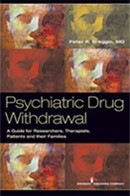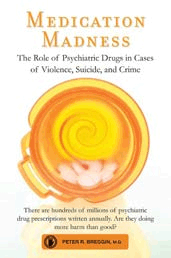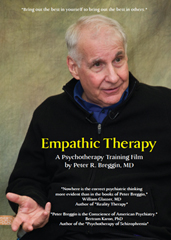The Anthrax Perpetrator and the Arkansas Shooter Were Taking Antidepressants
08/17/2008
On August 7, 2008, a few newspapers mentioned that newly released government papers showed that bioweapons scientist Bruce Ivins had been taking the antidepressant Celexa during the time he developed and carried out his plan to send letters laced with anthrax through the mail. Ivins killed himself with an overdose with other pills on July 29 after learning that the FBI was going to indict him. His terrorist attack killed five people.
Within a week after his suicide, the government made public the information that Ivins had a history of mental instability and that he had been taking Celexa (citalopram), a Prozac knockoff. According to the August 7 Los Angeles Times, a U. S. Attorney reported that Ivins was taking Celexa in the summer and fall of 2001 — the time period during which he was planning and carrying out his anthrax letter assault, which began with poisoned letters postmarked September 18, 2001.
In a letter to a friend on June 27, 2000, Ivins indicated that he was taking Celexa. A week later he wrote that his psychiatrist and counselor thought his problems “may not be those of depression or bipolar disorder, they may be that of ‘paranoid personality disorder.'” On October 16, 2001, during the anthrax attacks, a coworker noted, “Bruce has been an absolute manic basket case in the last few days.”
Celexa, and the other newer antidepressants, commonly cause a worsening of depression, manic-like reactions (that mistakenly get diagnosed as bipolar disorder), and paranoia. A few newspapers mentioned Ivins’ use of Celexa; but none that I have found made any links between Celexa, suicide and violence, even though these associations appear in the FDA-approved label for the drug.
Turning to the second murderer, on August 13th Tim Johnson walked into the Democratic headquarters in Little Rock and shot dead the chairman of the Arkansan Democratic Party, Bill Gwatney. There was no apparent motive. Earlier in the day, Johnson abruptly began to behave irrationally at work. He looked extremely irate, scribbled graffiti on the walls, and then abruptly left. Later in the morning, he shot and killed Mr. Gwatney. After a police chase, Johnson himself was shot to death. A police property receipt for items taken from Johnson’s home listed a bottle of the antidepressant Effexor XR (long-acting venlafaxine). Effexor, like Celexa, can cause suicide violence, and manic-like reactions.
The scientific evidence is overwhelming that the antidepressants can and frequently do cause extremely abnormal behavior. I’ve reviewed this evidence and vividly described dozens of cases of antidepressant-induced suicide, violence and crime in my new book, Medication Madness: A Psychiatrist Exposes the Dangers of Mood Altering Drugs (St. Martin’s, 2008). In almost all the cases, people with no history of severe problems nonetheless lost control of themselves after starting on an antidepressant and committed desperate and often bizarre acts with disastrous consequences.
Although the scientific literature that I review in Medication Madness demonstrates that antidepressants can cause severely disturbed behavior, there’s no need look further than the conservative FDA-approved labels for the drugs as found in the Physicians’ Desk Reference (2008). Since 2005 all the antidepressants including Celexa and Effexor carry a black box warning about antidepressant-induced suicidality. The black box also warns about “clinical worsening” and “unusual changes in behavior.” This warning is prominently situated at the top of the lengthy description of the drugs that are found in the official labels or package inserts.
In addition to the black box, both labels for Celexa and Effexor have extensive additional warnings about antidepressant-induced abnormal behavior, including reports of “anxiety, agitation, panic attacks, insomnia, irritability, hostility, aggressiveness, impulsivity, insomnia, akathisia (psychomotor restlessness), hypomania and mania” in association with the drugs. This list is worth re-reading a few times; it is a prescription for violence. It mimics almost word for word the warnings I began giving many years earlier in my books and scientific articles. While these warnings are found in all antidepressant labels, Effexor goes one step further by listing “homicidal ideation” as a rarely reported adverse effect to the drug.
In addition, the FDA now requires the drug companies to make available for patients and their families a special “Medication Guide” about the risks associated with antidepressants. The guide warns patients and their families to be on the lookout for multiple symptoms that may develop after the drug has been started, including the following bulleted items:
· Attempts to commit suicide
· New or worse depression
· Feeling very agitated or restless
· New or worse irritability
· Acting aggressive, being angry, or violent
· Acting on dangerous impulses
Given this readily available information, why isn’t there an overwhelming public demand to examine the role that antidepressants may have played in the violence perpetrated by Bruce Ivins and Tim Johnson, as well as many others such as Cho, the mass murderer at Virginia Tech, and Eric Harris, the mass murderer at Columbine High School?
Is there a conspiracy to remain silent about these matters of such enormous public importance? The drug companies spend billions of dollars each year, often in the form of hush money for lawsuit settlements, in order hide from the public how deadly their drugs can be. They advertise heavily in the scientific journals and in the general media, and use this leverage to suppress negative information about their products. The drug companies control much of what happens in organized medicine and psychiatry, including nearly all pharmacology research. The FDA and the NIMH act like partners to the drug industry in what I call the psychopharmaceutical complex. This is not so much a conspiracy as an open partnership among interest groups who feed off pushing psychiatric drugs onto the public.
Given the growing mountain of cases of violence that may be directly caused by exposure to antidepressants, it’s time for Congress to get more seriously involved in demanding the facts and in investigating the role of antidepressants in so many murders that may have been avoidable if the perpetrators had not been given the drugs. The media also needs to take up the issue. Instead of passing mentions in a few newspapers that these and other murderers have been exposed to antidepressants, we need genuine investigative reporting to dig out the details. In the meanwhile, as my new book demonstrates, and as the FDA labels warn, there can be no doubt that antidepressants can and do cause suicide, mayhem and violence.
Peter Breggin’s newly revised website is www.breggin.com His latest book is Medication Madness: A Psychiatrist Exposes the Dangers of Mood-Altering Medications (St. Martin’s Press, 2008).





